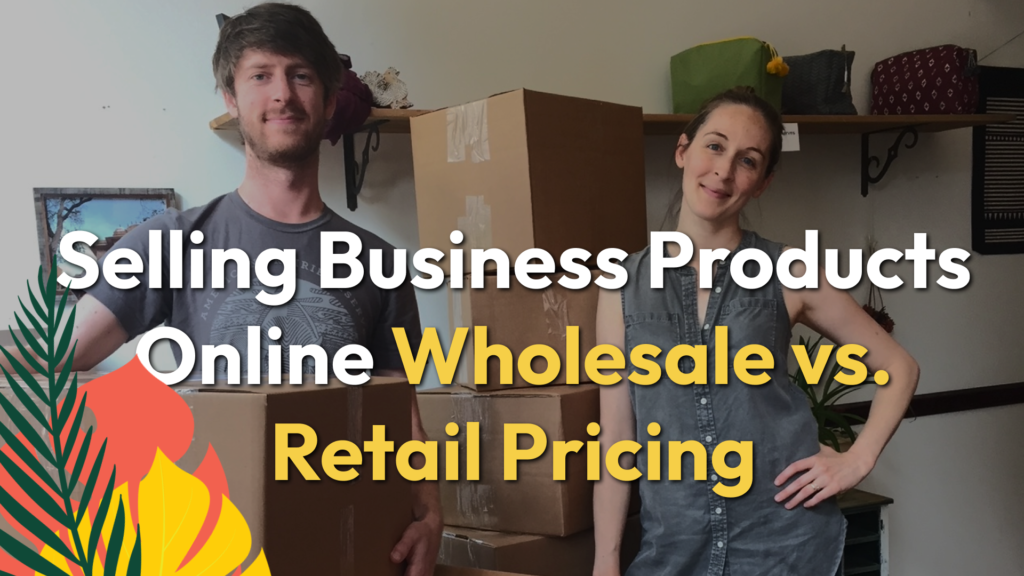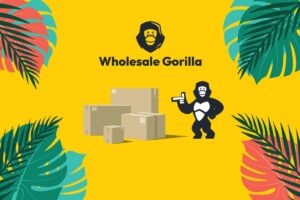As an eCommerce business, you’ve likely determined what you will be selling online by this point. Perhaps, though, how you will be selling is still a big question mark.
If you’re just getting started and weighing whether to adopt a wholesale or retail product pricing strategy, our team at Wholesale Gorilla has created this guide to help.
Here, we’ll outline the key differences between wholesale vs. retail pricing, how to select which model suits your needs, and how to calculate wholesale and retail prices.
By the end of this guide, you’ll have the confidence to choose which type of pricing is right for you.
Several factors determine the differences between wholesale and retail price.
But first, let’s define wholesale and retail pricing:
Table of Contents
ToggleWhat Is Wholesale Pricing?
Wholesale pricing sells goods and services at a discounted rate to retailers, wholesalers, or other businesses. Wholesale pricing is typically used by manufacturers and distributors looking to quickly move large quantities of products. Wholesale prices are usually lower than retail prices. This is because wholesale prices do not include the additional costs associated with marketing, advertising, and other overhead expenses that retailers must pay. In many cases, there are fewer wholesalers than there are retailers in a given market or industry, which oftentimes means less competition.
What Is Retail Pricing?
On the other hand, retail pricing sells goods and services directly to consumers at a higher price than wholesale. Retailers typically add a markup to the wholesale price to cover those marketing, advertising, another overhead costs required to attract the end consumer. Also, competition in retail is often higher than in wholesale. Therefore, retail stores may also offer discounts or promotions to acquire customers and boost sales.
Wholesale vs. Retail Pricing Business Model
Now, let’s dive into how these pricing strategies fit into their respective business models. Your choice between the two models largely depends on the type of product or service being sold as well as your business goals.
Wholesale Pricing Factors
A wholesale price strategy is determined by a variety of elements. These include:
Quantity of Goods Purchased
The quantity of goods purchased is important for setting wholesale pricing. Manufacturers and distributors typically offer discounts for bulk purchases, allowing them to quickly move large quantities of products. The general rule is: The more goods purchased, the greater the discount offered.
Quality of Goods Purchased
The quality of the goods being purchased also influences wholesale pricing. Higher-quality goods typically cost more than lower-quality goods, so manufacturers and distributors may offer discounts for higher-quality products.
Shipping Costs
Shipping costs are also taken into consideration to determine wholesale pricing. These can be affected by fuel costs, special handling requirements, holiday volumes and other factors. Manufacturers and distributors may offer discounts for orders that require less shipping, as this helps reduce their overhead expenses.
Payment Terms
Payment terms for your business’s accounts are also a factor in determining wholesale pricing. Manufacturers and distributors may offer discounts for orders that are paid upfront. This reduces risks of non-payment.
Payment terms could be cash on delivery (COD), end-of-month payments (EOM), or a set number of days after the client is invoiced, such as net 30, net 45, or net 60. Term options may also be negotiated, from prepayments to an upfront percentage paid to installment agreements.
Retail Pricing Factors
A retail pricing strategy has its own set of considerations, including:
Manufacturer’s Suggested Retail Price
Many times, wholesalers offer what’s called a manufacturer’s suggested retail price (MSRP), which helps guide pricing decisions for retailers. The manufacturer’s suggested retail price includes costs the produce the product as well as an average retail markup.
Location
Location, location, location, as they say. Location is essential to consider when setting retail pricing. For instance, retail stores typically charge higher prices in higher-demand areas, and that allows them to maximize profits. Location also largely determines shipping costs, as do local tax requirements.
Competition
The market’s competitive landscape also influences retail pricing. In competitive pricing, retail prices are adjusted to be either their prices higher than competitors, lower than competitors, or to match their competitors. These strategies depend largely on the type of market (new or established), or types of products offered (for e.g., luxury item vs. commodity).
Brand Recognition
Brand recognition is the ability for customers to instantly understand who you are, what you offer, and how you make them feel. It’s a way of forming deep connections with your audience, and highly influential to a retail price. Businesses may charge a higher retail price for products with strong brand recognition. This helps to capitalize on brand value.
Advertising and Marketing Expenses
The cost to advertise and market your products is also considered when you set your retail price. As a retailer, you may decide to markup the wholesale price to cover these costs. A well-recognized brand is built through a robust advertising and marketing strategy, which oftentimes yields a higher price.
Benefits Of Wholesale Pricing
Wholesale pricing offers several benefits for businesses. Here are a few:
Lower Prices
Wholesale pricing allows businesses to purchase goods and services at lower prices than retail. This can help businesses save money on their purchases and increase profits.
Bulk Purchases
Wholesale pricing also allows businesses to purchase goods and services in bulk, which can help them reduce their overhead costs. Bulk purchases also allow businesses to quickly move large quantities of products and increase sales.
Benefits Of Retail Pricing
Retail pricing offers business benefits as well, including:
Higher Prices
Retail pricing allows businesses to charge higher prices than wholesale, which can help maximize profits. This is especially beneficial for businesses that sell high-quality products or services.
Increased Visibility
Retail pricing also helps businesses increase their visibility, as customers are more likely to purchase products or services that are priced competitively. Visibility allows businesses to attract new customers and retain existing ones.
Brand Recognition
Retail pricing also allows businesses to capitalize on the value of solid brand recognition. Customers may be willing to pay more for products with strong brand recognition, allowing businesses to increase their profits.
If your business goal is to sell orders in bulk at lower margins, then wholesale pricing may work best if your business. If you aim to sell with higher margins and greater brand awareness, then retail pricing could be a suitable option for your company.
Calculation Formulas for Wholesale vs. Retail Pricing
Calculation Formula for Wholesale Pricing
When setting wholesale pricing, businesses typically use a formula that considers the cost of goods, overhead costs, and desired profit margin. That formula is:
Wholesale Price Cost of Goods + Overhead Costs + Desired Profit Margin
Example
For example, if a business has a cost of goods of $50 and an overhead cost of $20, and they want to make a 20% profit margin, their wholesale price would be calculated like this:
Wholesale Price $50 + $20 + (0.2 x ($50 + $20))
Wholesale Price will be $90
Calculation Formula for Retail Pricing
When calculating retail pricing, businesses typically use a formula that considers the wholesale price, overhead costs, and desired profit margin. Here is that formula:
Retail Price Wholesale Price + Overhead Costs + Desired Profit Margin
Example
For example, if a business has a wholesale price of $90 and an overhead cost of $20, and they want to make a 40% profit margin, their retail price would be calculated as follows:
Retail Price $90 + $20 + (0.4 x ($90 + $20))
Retail Price will be $154
A Note on Margins
It is important to share that your company’s desired profit number is largely dependent on industry-specific factors. For example, profit margins will look much different with products like medical supplies, versus products like luxury fashion accessories.
According to Shopify, apparel retail brands typically aim for a 30% to 50% profit margin when setting a retail price, while direct-to-consumer retailers aim for a profit margin of 55% to 65%.
Jewelry businesses, in contrast, earn an average gross profit margin of 42.6%. Gross profit margins of non-alcoholic beverages are nearly 55%.
Now that you’ve grasped how wholesale and retail pricing strategies work, the benefits of each pricing strategy, as well as how to calculate wholesale prices and retail prices—which strategy do you believe will work best for you?
We wish you much success in whichever model you choose.
Wholesale Gorilla Online Wholesale Portal
At Wholesale Gorilla, we offer an online wholesale portal that provides businesses access to various products at discounted prices. With Wholesale Gorilla, your business can purchase goods and services in bulk and save money. Our portal also gives your business access to exclusive deals and discounts and help you maximize profits. Contact our team to learn how we can help you take the stress out of online wholesale sales




